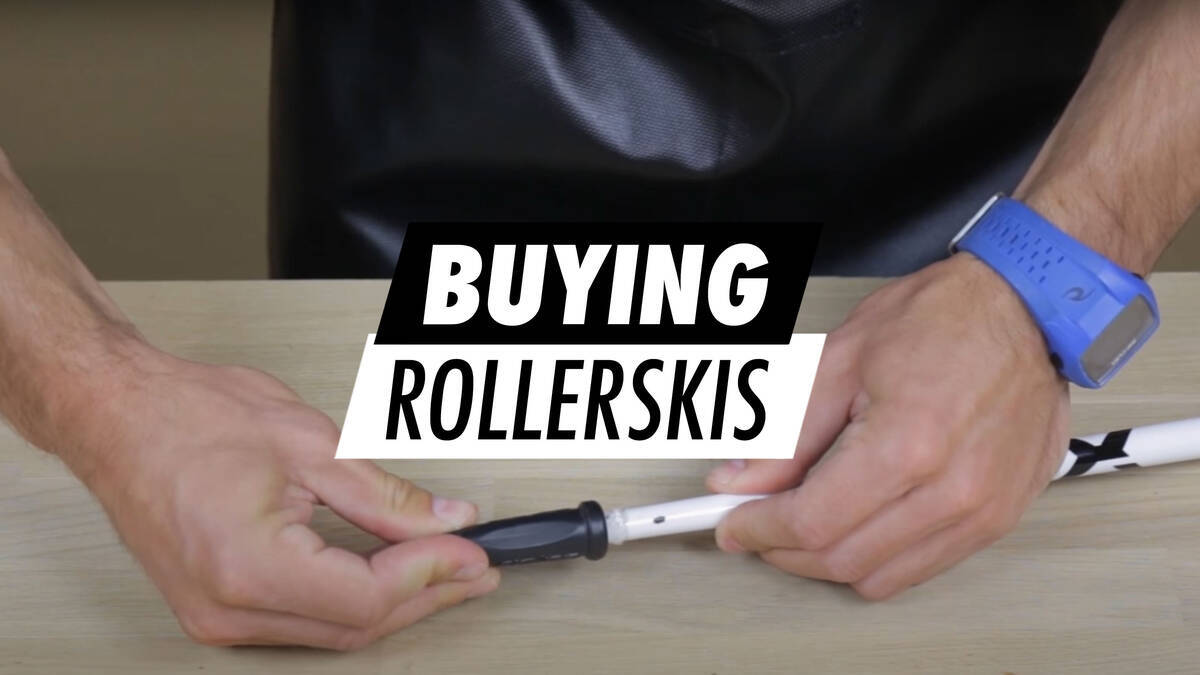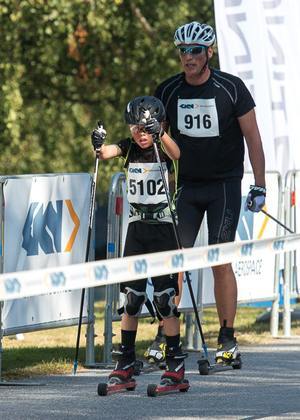Buying Roller Skis

Various roller ski styles and models are available, offering a range of possibilities for achieving the perfect configuration. This guide assists you in selecting, when acquiring new roller ski equipment.
Below, discover how to identify the appropriate equipment for your needs.
Frames: Which style are you using and where?
Initially, assess your skiing style - do you prefer classic roller skiing or are you more inclined towards the skating style - and what kind of surface you favour. Your answers to these questions are quite crucial for selecting a roller ski frame. For instance, if gravel is your preferred terrain, then low frames aren't suitable. Conversely, high frames will test your balance. Generally, participating in a beginner's class is advisable if you've never tried roller skiing. This will also aid in choosing the right equipment.

Frames are constructed from different materials such as aluminium, wood, steel, and carbon, each offering different benefits and drawbacks. For example, wood provides greater flexibility and a more authentic skiing feel, while aluminium is more rigid and lighter, making it ideal for competitions as it maximises power transfer.
Roller Ski Wheels
Apart from selecting suitable frames, obtaining wheels with the correct hardness is critical when choosing the right roller skis for you. Several roller ski manufacturers provide one to four different wheel hardness options. If you wish to ride on gravelly roads, softer wheels are preferable, whereas harder wheels can be chosen for smooth asphalt surfaces. Remember to consider wheel hardness as well as the material they are made from when buying roller skis. Harder wheels result in more resistance on smooth asphalt, while softer wheels make rolling easier.
Roller Ski Boots
The choice of roller ski boots is now more extensive than ever. Previously, it was common to use regular winter equipment, but now summer roller ski boots can also be purchased. These boots are advantageous as they are less insulated compared to winter boots, thus more comfortable for temperatures above 5-8 degrees Celsius.
Poles and Pole Tips for Roller Skiing
The roller ski market now includes poles specifically designed for roller skiing, with significant advancements in weight and materials.
Choose roller ski poles that match your proficiency level, roller ski type, and body length. Beginners or intermediate skiers might prefer a softer ski pole, as it is more comfortable and prevents arm soreness. Experts participating in competitive races might opt for a stiff roller ski pole (80 - 100% carbon) as it ensures better power transfer. Note that stiffer poles are easier to break upon impact, such as bumps and strikes. Therefore, it is prudent to transport poles in a pole bag. Avoid throwing the poles into a vehicle or on the ground since they might fracture.
Your roller ski poles' length should correspond to your height, with consideration given to your skiing style (classic or skate).
Classic
Select pole lengths approximately 30 cm (12 in) shorter than your height. Stand on the ground with the pole also placed on the ground to measure the proper length. Experienced roller skiers may have their preferred pole length.
Skate
For the skating style, poles should be 15 - 20 cm (6-8 in) shorter than your body height. Stand with both yourself and the pole on the ground when determining the appropriate length. Experienced roller skiers might prefer custom pole lengths.
Roller Ski Pole Tips
Many mistakenly assume winter tips are suitable for roller skiing. This is not the area to compromise! Invest in quality pole tips because cheaper options often consist of softer materials that wear quickly when roller skiing. Initially, a grindstone suffices to maintain these tips, but eventually, replacement becomes necessary.
Learn from this video how to replace your roller ski pole tips:
Grips and Straps
Various grip and strap models for roller ski poles are available. It's vital that grips and straps afford easy control over the pole. Many grips feature a cork surface, delivering good, comfortable control. Straps come in different models like Velcro or the innovative boa closing.
With time, grips wear out, necessitating replacement.
View the video below to learn how to change the grips:
Furthermore, for safety, if your roller ski poles lack built-in reflectors, consider affixing some to enhance visibility in traffic. The poles move the most during roller skiing, thus attracting attention from vehicles on dimly lit bike paths or roads. Many roller ski poles come with built-in reflectors; discover more under each product description.
Wearing a helmet while roller skiing is a must, as speeds can reach up to 30 km/h.
We trust this guide aids in steering you in the right direction and answers your questions regarding purchasing roller skis and accessories. Should you have further inquiries or remain uncertain about your roller ski choice, please do not hesitate to contact us.
